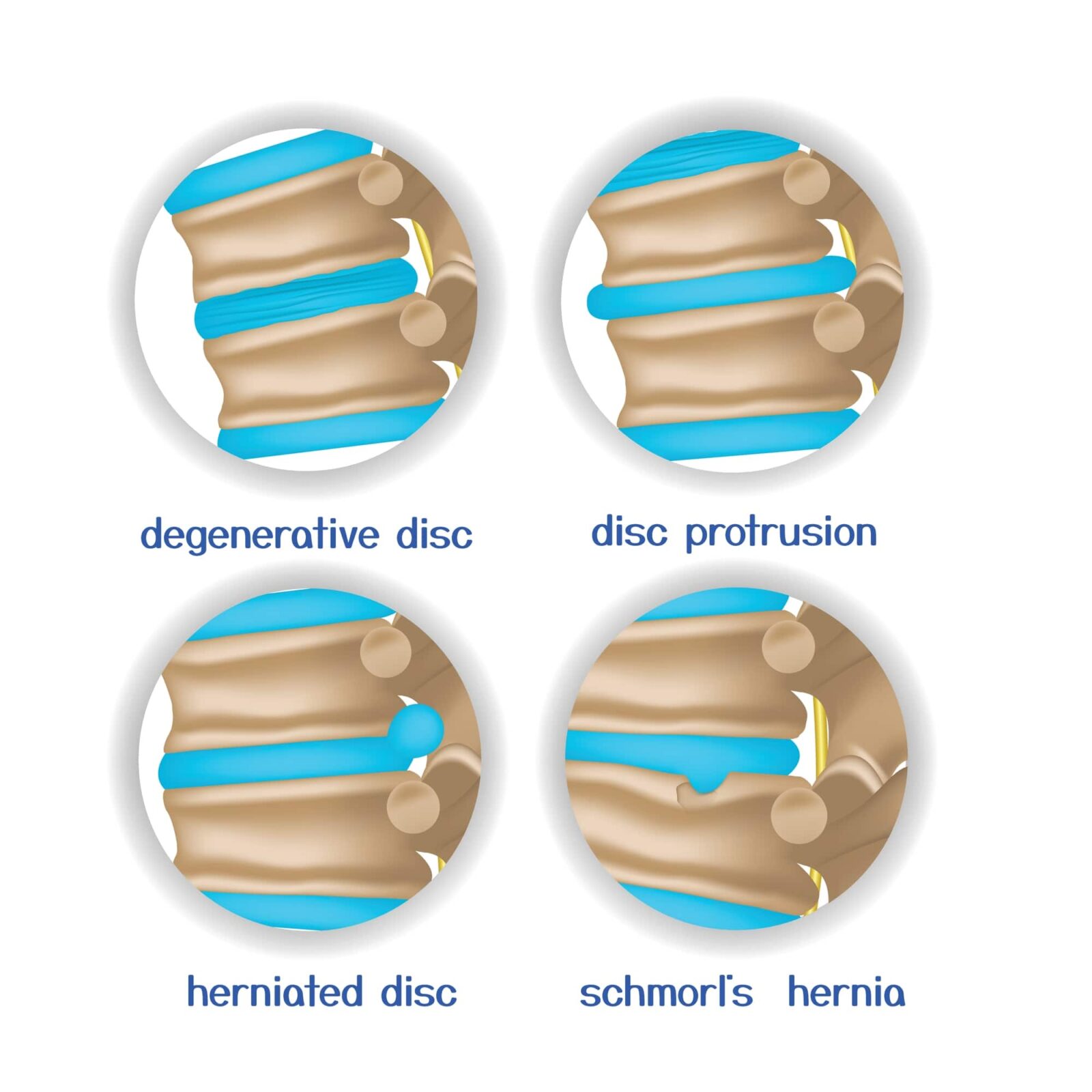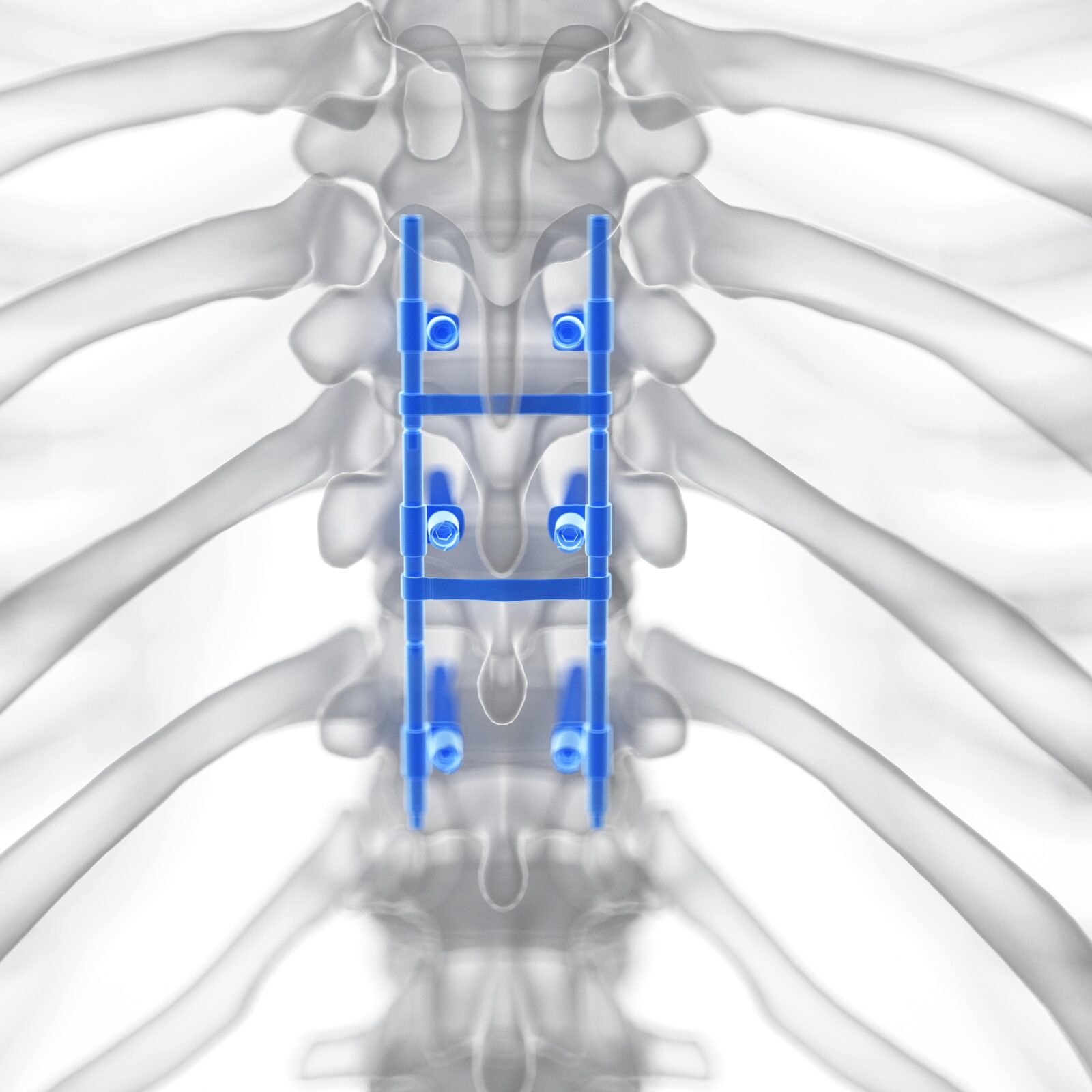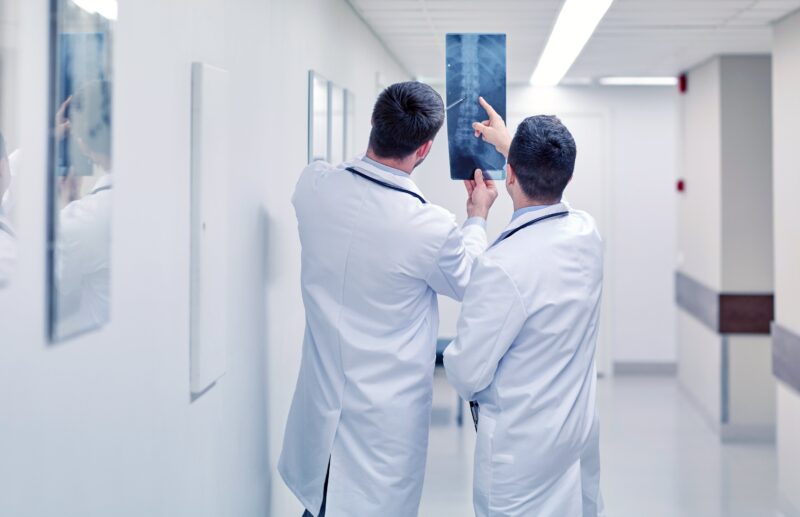If you’re someone who suffers from back pain, you may be familiar with some of the most common causes of this discomfort, such as muscle strain, herniated discs, or arthritis. However, there are other, less-known causes of back pain that can be equally disruptive to your quality of life. One such condition is Schmorl’s Hernia, a type of herniated disc that occurs when the nucleus pulposus protrudes into the vertebral body. While Schmorl’s Hernia may not be as well-known as other causes of back pain, it’s important to be aware of this condition and its symptoms, especially if you experience chronic or severe back pain. In this blog post, we’ll explore Schmorl’s Hernia in more detail, including its causes, symptoms, and treatment options.
What is Schmorl’s Hernia?

Schmorl’s Hernia, also known as intravertebral disc herniation or Schmorl’s nodes, is a type of herniated disc that occurs when the nucleus pulposus, the gel-like substance found in the center of intervertebral discs, protrudes into the vertebral body through a weakened area of the endplate. However, Schmorl’s hernia differs from other disc herniations in that the disc herniates upward or downward towards the adjacent vertebrae instead of sideways. It’s a relatively common condition, and studies have shown that around 22% of the general population may have Schmorl’s Hernia.
While some people worry that Schmorl’s hernia can be cancerous they are not typically cancerous or associated with an increased risk of developing cancer. Schmorl’s nodes are a type of vertebral endplate irregularity, which occurs when the cartilage that connects the discs to the vertebrae bulges into the vertebral body. It’s important to note that while Schmorl’s nodes are not cancerous, they can still cause significant pain and discomfort for some individuals. If you are experiencing back pain or other symptoms associated with Schmorl’s nodes, it’s important to consult with a spine specialist to determine the underlying cause and develop an appropriate treatment plan.
Causes and Prevention of Schmorl’s Hernia
The exact cause of Schmorl’s Hernia is not fully understood, but researchers have identified several possible factors that may contribute to its development. These include age, trauma or injury to the spine, degenerative disc disease, osteoporosis, and genetics. Certain occupations that require heavy lifting or repetitive bending and twisting that exert excessive pressure on the discs may also increase the risk of developing Schmorl’s Hernia.
While not all cases of Schmorl’s Hernia can be prevented, especially if they are genetic, there are steps that can be taken to reduce the risk of developing the condition. These include avoiding activities that require heavy lifting or repetitive bending and twisting, maintaining good posture, exercising regularly, and avoiding smoking and excessive alcohol consumption.
Symptoms of Schmorl’s Hernia
The symptoms of Schmorl’s Hernia can vary depending on the location and severity of the herniation. Many cases don’t actually cause symptoms and are accidentally discovered. However, some cases can cause symptoms if the adjacent vertebrae becomes inflamed or swollen, or if the herniation pinches a nerve. In these cases, common symptoms can include:
- back pain
- stiffness
- numbness or tingling in the arms or legs
- muscle weakness
Treatment and Management
Since many cases of Schmorl’s hernia do not cause symptoms, they are often discovered by accident while reviewing the spine for other reasons. Schmorl’s hernia can be detected through imaging studies such as x-ray, MRI, CT scan, or PET scans.
Treatment for Schmorl’s Hernia typically involves managing symptoms through non-surgical means such as physical therapy, medication, and lifestyle modifications. Surgery may be considered in severe cases or when non-surgical treatments have failed to provide relief. Maintaining good spine health through exercise, proper posture, and weight management can also help prevent the development of Schmorl’s Hernia.

Surgery is not typically the first line of treatment for Schmorl’s Hernia, and non-surgical options are usually tried first. However, in severe cases where conservative treatments have failed, surgical intervention may be necessary. There are a few surgical treatments available for Schmorl’s Hernia, which include:
- Percutaneous Vertebroplasty: This minimally invasive procedure involves the injection of bone cement into the affected vertebra to stabilize the area and reduce pain.
- Endoscopic Discectomy: This surgical technique uses an endoscope to remove the herniated disc material from within the vertebral body.
- Microdiscectomy: This procedure is similar to Endoscopic Discectomy but uses a microscope to visualize the herniation and remove it.
- Spinal Fusion: In cases where Schmorl’s Hernia has caused significant instability in the spine, a spinal fusion may be recommended. This involves fusing two or more vertebrae together to stabilize the area.
It’s important to note that while surgical options for Schmorl’s Hernia exist, surgery is not always necessary or appropriate for every patient. A spine specialist will evaluate each case on an individual basis and make treatment recommendations based on the patient’s specific needs and symptoms.
In Conclusion
Schmorl’s Hernia is a common condition that can cause pain, discomfort, and other symptoms that can affect a person’s quality of life. By understanding the causes, symptoms, and treatment options for Schmorl’s Hernia, individuals can take steps to manage their symptoms and prevent the condition from worsening. If you suspect you may have Schmorl’s Hernia, it’s important to seek medical attention to receive an accurate diagnosis and develop an appropriate treatment plan.










